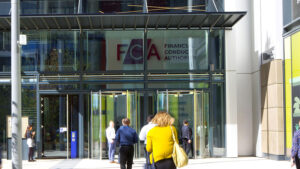By Chris Kushlis, head of EM macro strategy at T Rowe Price
The external environment affecting emerging markets (EM) has materially changed in recent years, with slowing global growth and tightening financial conditions creating a more challenging backdrop.
For some, this only confirms the perception of EM as a purely short-term, tactical allocation – offering potentially high returns, but at a cost of heightened risk and volatility.
However, this view of EM not only underappreciates the sheer scope of investment opportunities, but also fails to understand how significantly the EM universe has evolved in recent decades.
Avoid EM as growth slows
The playbook for investing in EM has changed, with decisions no longer predominantly driven by the global economic cycle. Today’s EM landscape demands a more granular approach and country-by-country expertise, as broad EM generalisations have become increasingly tenuous.
In addition to differences by country, EM offers a varied menu of assets to invest in, including hard currency sovereign and corporate debt and local currency debt, as well as deeper, more mature, equity markets.
Recent developed market (DM) policy tightening has been felt disproportionately across EM debt markets. On one side is a group including Mexico and the larger economies in South America that are underpinned by robust fundamentals. This group continues to be able to access credit markets, and spreads have remained reasonable and relatively stable.
See also: What should investors expect ahead of India’s marathon election?
On the other side is a set of fundamentally weaker EM countries that are struggling to refinance debt nearing maturity, and many have either defaulted already or are at risk of doing so.
In regards to equities, the EM universe is split along similar fundamental lines. However, through detailed research and a good understanding of regional and country-specific dynamics, it is possible to find fundamentally good businesses at potentially distressed prices.
EM offers few defensive qualities
One of the biggest investor misconceptions is that EM is all about dynamic, growth-oriented companies. Asset flows confirm this perception, with data showing that the bulk of all active money flowing into the EM equity universe is invested in growth strategies, while only a fraction of total flows are invested in value.
This huge bias means that a lot of value-oriented opportunities, particularly in traditional ‘old economy’ areas like manufacturing, are being overlooked. Consequently, many good businesses are flying under the radar at potentially very depressed prices.
Companies with relatively low-risk profiles, reasonable P/E levels, and predictable earnings streams may not fit the traditional view of a ‘dynamic’ EM investment, but these businesses exist.
Risk of policy and company error is greater in EM
Significant reform measures have been implemented in many EM countries, meaning most are no longer just a few bad decisions away from a crisis.
Detailed research is central in identifying those countries that are truly committed to consistent, market-friendly policy direction. Similarly on the corporate side, great strides have been made in terms of improving governance.
See also: AllianzGI to operate as ‘wholly foreign-owned’ fund manager in mainland China
Even when sharp sell-offs do occur in EM debt markets, we no longer fear that these events pose a systemic risk to the wider asset class. Over the past 25 years, when such periods have occurred, they have proved relatively short-lived, creating opportunities to enter the market at potentially depressed valuations.
On the equity side, evidence of stronger management discipline and better decision-making is a key factor, suggesting a positive longer-term outlook for EM equities.
EM growth potential to be subdued
While market uncertainty and a mixed global economic outlook are important influences on the broad EM outlook, these need to be weighed against the strengths of individual economies and the positive secular trends that continue to support long-term optimism in EM generally.
For example, many EM countries continue to enjoy positive economic growth at rates well ahead of DM. Internal trade between EM economies has now surpassed external trade volumes with DM economies, while a growing EM middle class is supportive of long-term domestic demand.
While EM still has a lot of room to potentially improve productivity and catch up with DM peers. Large, young, and increasingly educated workforces are central to closing this gap, along with the broadening adoption of technology.
ESG considerations in EM significantly lag DM
While ESG investing has entered the mainstream in DM, there is an ongoing perception that less importance is attached to these factors in EM.
However, EM companies have made great progress in improving ESG credentials in recent years, with many businesses today displaying standards in line with global best practices.
Issuance of sustainable bonds in EM has also noticeably increased in recent years, driven by robust issuance from some relatively new participants – including the Philippines, Mexico, Colombia, and Chile. This adds to the prominent issuance in more seasoned markets, like China.
It is also worth highlighting the huge investment made by China in recent years in transitioning from fossil fuels. China is now the world’s largest producer of wind and solar energy and also the largest domestic and outbound investor in renewable energy.
This seismic shift is creating knock-on benefits for EM countries and companies geared to this transition, as well as having positive implications for energy security and affordability across the EM region.
See also: Alliance Trust replaces Jupiter with Arga following Whitmore’s exit







